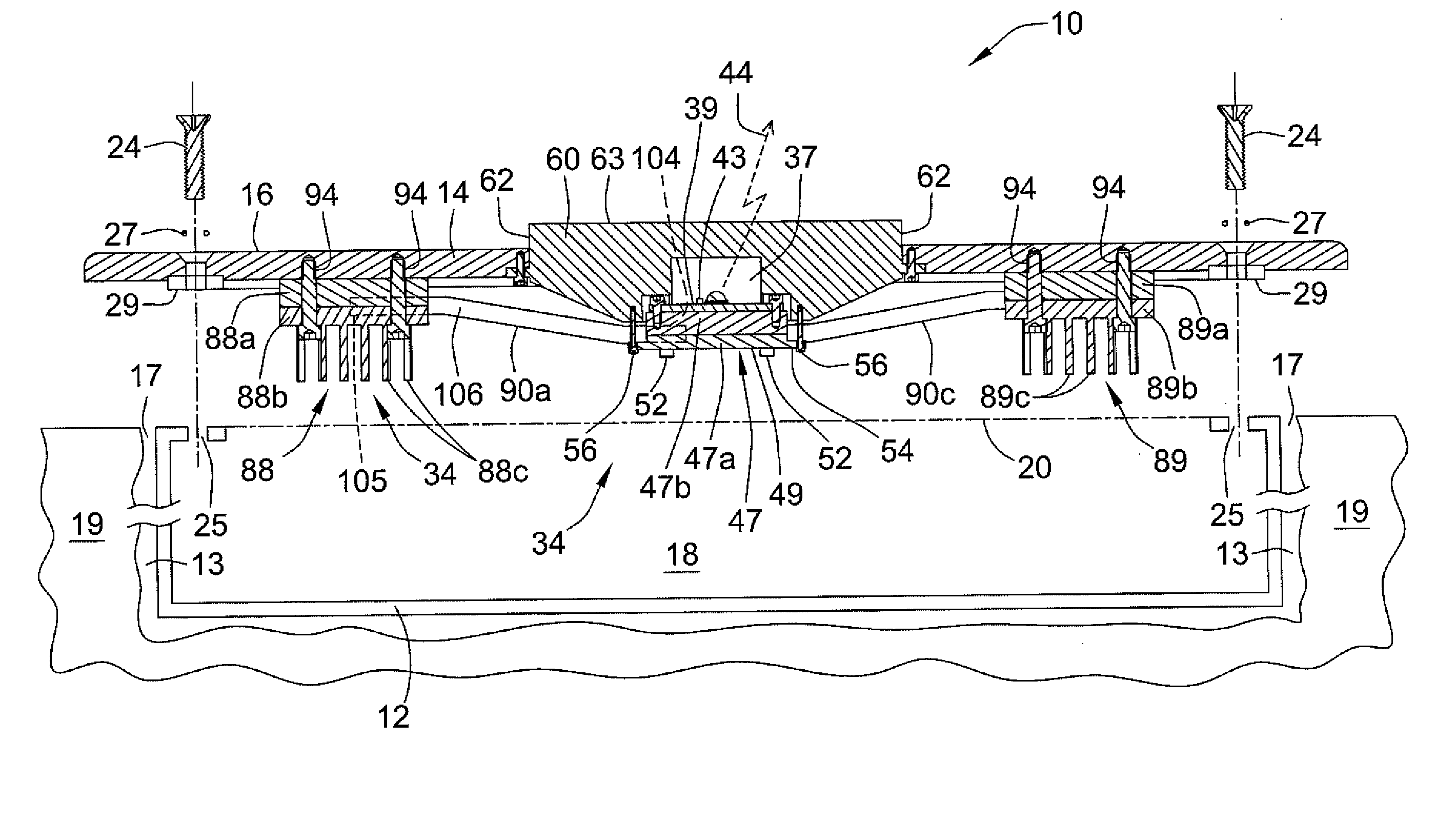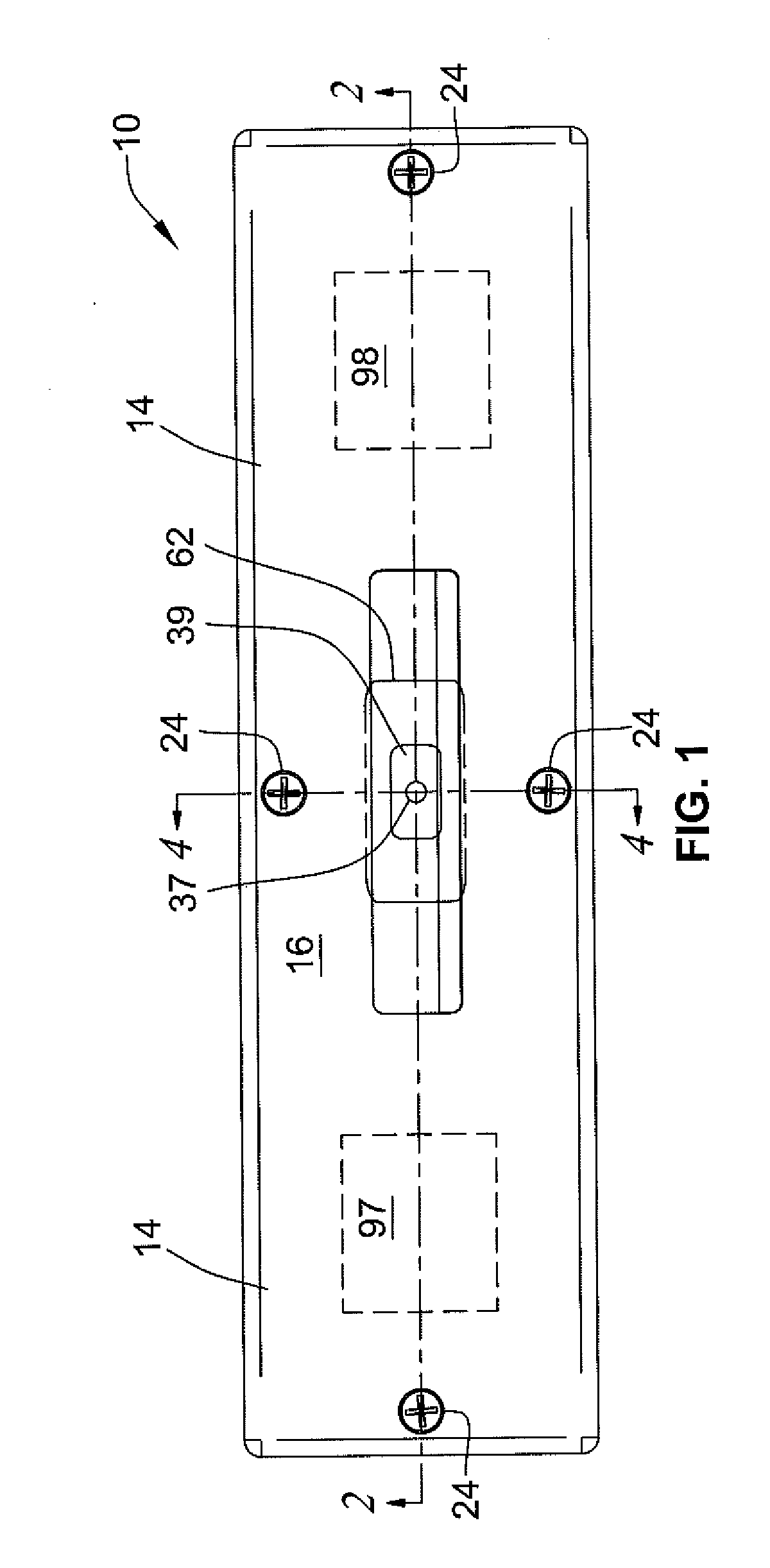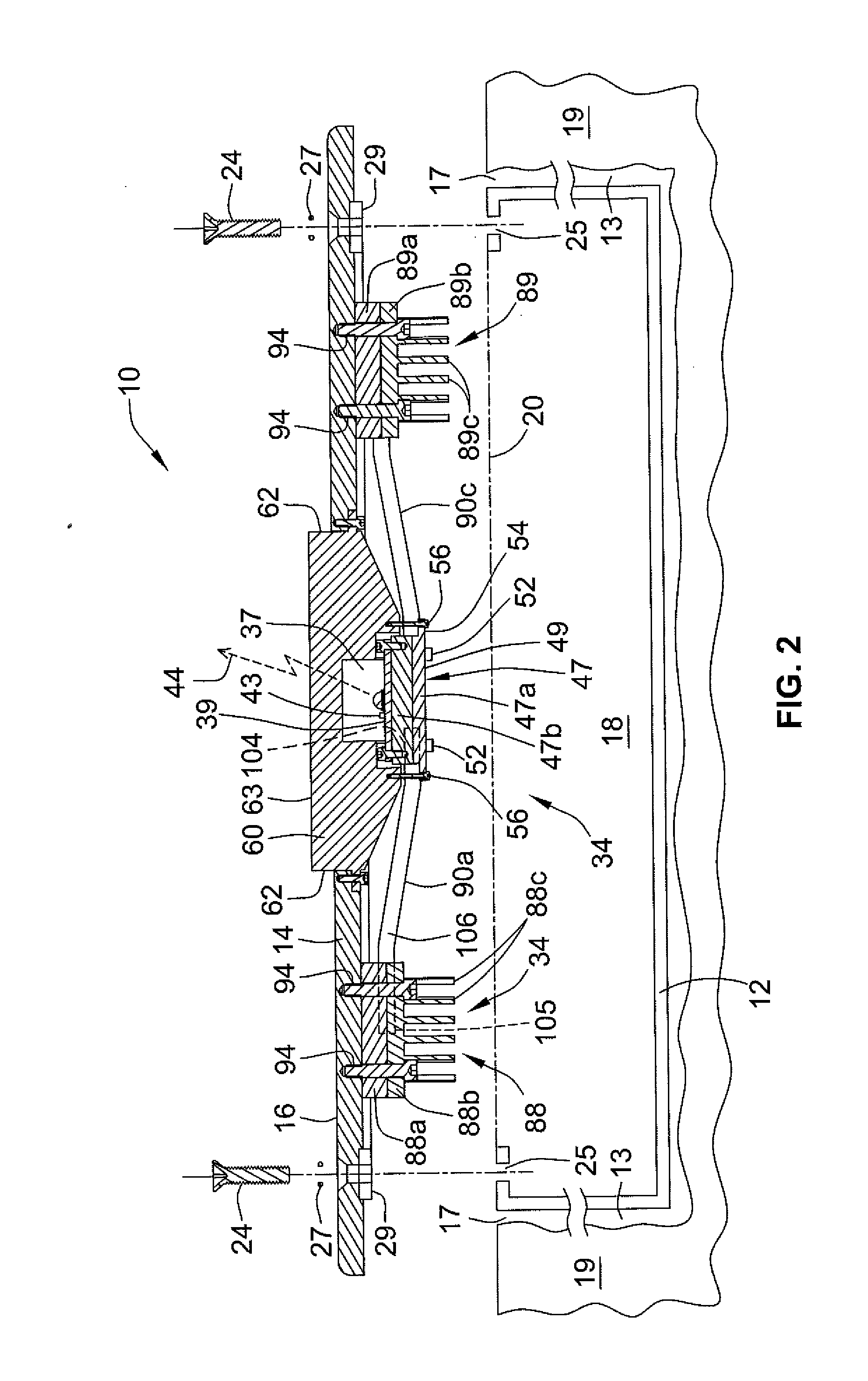Thermally managed LED recessed lighting apparatus
a led lighting and recessed technology, applied in lighting and heating apparatus, lighting support devices, lighting applications, etc., can solve the problems of increasing increasing the difficulty of installation, and particularly challenging applications, and achieves low thermal resistance, high heat carrying capacity, and the effect of avoiding shortening the life of the led
- Summary
- Abstract
- Description
- Claims
- Application Information
AI Technical Summary
Benefits of technology
Problems solved by technology
Method used
Image
Examples
Embodiment Construction
[0023]Referring collectively to FIGS. 1 through 4, a preferred embodiment of a thermally managed LED lighting apparatus 10 constructed according to the present invention includes a housing 12, and a trim which comprises a non-vented trim 14. The housing 12 mounts in a recess 13 located behind a recess opening 17 formed in an architectural structure 19. By way of non-limiting example, architectural structure 19 may be a wall, ceiling, stair riser, pool, fountain, water feature, or bollard and may be located either indoors or outdoors, above water or below. The trim, namely non-vented trim 14, trims the recess opening 17 and generally conceals all or most of housing 12 and the edge(s) of the recess opening 17 after trim 14 is installed.
[0024]Trim 14 has an inside surface 15 and a substantially planar outside surface 16. The housing 12 at least partially encloses an interior space 18 within housing 12 and has a front opening 20 adjoining interior space 18. The non-vented trim 14 is sec...
PUM
 Login to View More
Login to View More Abstract
Description
Claims
Application Information
 Login to View More
Login to View More - R&D
- Intellectual Property
- Life Sciences
- Materials
- Tech Scout
- Unparalleled Data Quality
- Higher Quality Content
- 60% Fewer Hallucinations
Browse by: Latest US Patents, China's latest patents, Technical Efficacy Thesaurus, Application Domain, Technology Topic, Popular Technical Reports.
© 2025 PatSnap. All rights reserved.Legal|Privacy policy|Modern Slavery Act Transparency Statement|Sitemap|About US| Contact US: help@patsnap.com



